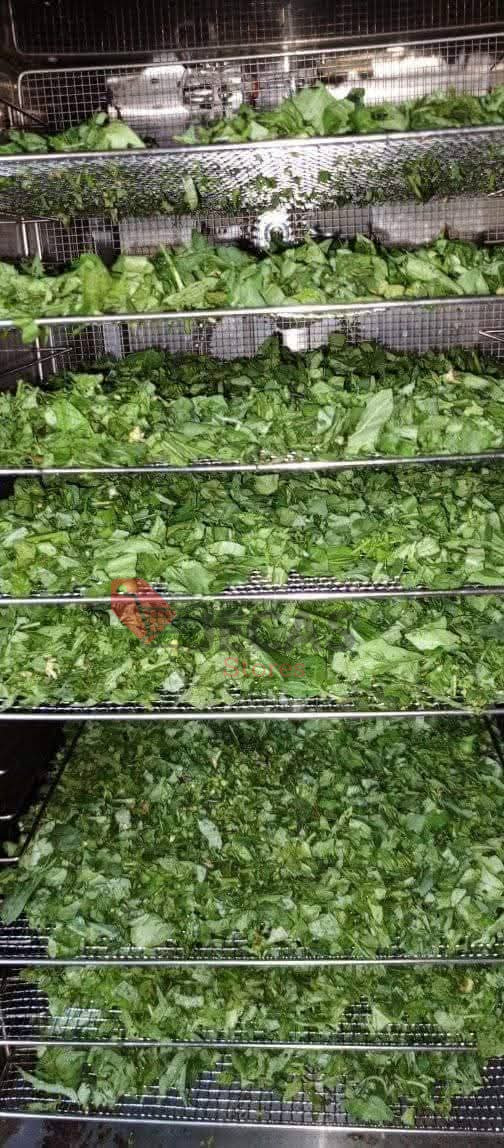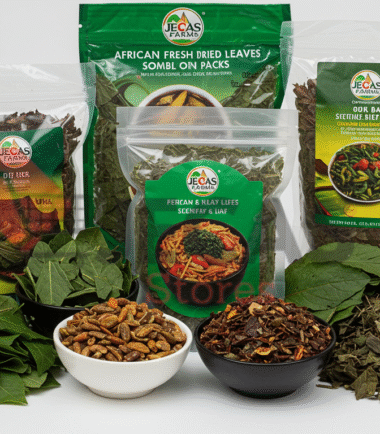DIFFERENT LEAVES DRYING PROCESS
Understanding the Different Leaves Drying Process is essential for preserving the quality, nutrients, and flavor of traditional African vegetables. Whether you’re working with ugu (fluted pumpkin), scent leaf, bitterleaf, or uziza, the right drying technique makes all the difference.
Our leaf preservation method begins with sorting the fresh vegetables to remove damaged or dirty leaves. They are then washed thoroughly in clean, running water to eliminate sand, insects, or farm residue. Once cleaned, the leaves are drained and laid flat in a single layer under a shaded, ventilated area.
Sun-drying is used for many leaves, but never under direct sunlight. We dry under shade or low-UV netting to protect the color and prevent nutrient loss. This process may take 2–3 days depending on humidity levels. The leaves are turned regularly to ensure uniform drying and to prevent mold.
For leaves with higher moisture content like waterleaf or afang (okazi), an extra step is taken. They are partially air-dried before final sun-drying, which helps retain their aroma without making them brittle. This method ensures the leaves remain intact and rehydrated easily during cooking.
In some cases, solar dryers are used. These eco-friendly units allow for temperature control and faster drying time, especially during rainy seasons. Whether natural or solar-dried, we maintain a strict hygienic environment to ensure the leaves are safe, clean, and ready for consumption.
The dried vegetables are then sealed in airtight packaging and stored in cool, dry spaces until delivery. Properly dried leaves can last for months without losing their taste, aroma, or nutritional value.
Want to explore how to store and cook dried African vegetables? Visit Healthline’s guide to drying and preserving vegetables.
Contact us on https://stores.jecasgroup.com. Learn more on https://web.facebook.com/search/top?q=jecas




Reviews
There are no reviews yet.